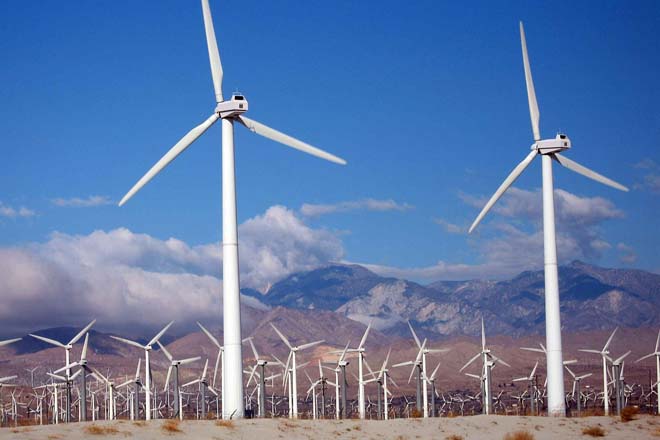buy diflucan online buy diflucan online no prescription
They encompass all of the major technologies – such as distributed storage, distributed generation, smart meters, smart appliances and electric vehicles – that are impacting the electricity system.
 Adoption of new technologies in OECD countries could bring more than $2.4 trillion of value creation for society and the industry over the next 10 years, by increasing the efficiency of the overall system, optimizing capital allocation and creating new services for customers.
Rapidly falling costs of grid edge technologies is fueling their adoption by customers. Smart meters, connected devices and grid sensors will increase the efficiency of network management and, more importantly, allow customers to have real-time information about energy supply and demand across the system.
The expected surge in adoption of electric vehicles could provide great flexibility to the grid in the shape of storage, but could also pose site congestion challenges, for example if a large number of electric vehicles wanted to recharge in a given geography at the same time.
Electric vehicle (EV) technology has evolved rapidly over the past five years.
Range has improved from less than 100 miles (161 km) up to 300 miles (483 km) for some models, addressing a prime convenience issue compared to traditional vehicles with internal-combustion engines (ICEs).
The cost of batteries has declined from about $1,000 per kilowatt-hour (kWh) in 2010 to below $300 in
2015, dramatically lowering the cost of EVs and enabling lower-cost models such as the Nissan Leaf or the Tesla Model 3.
These price drops have closed the gap with more traditional ICE cars, and buyers can choose from more
available models and styles every year. As a result, 2015 was the year where over one million EVs globally were on the road.
Today, electric vehicles in the largest markets benefit from direct subsidies, for example, in the form of tax credits that partially offset higher purchase costs. By 2020, EVs will be economical without subsidies in many countries – reaching three- to five-year breakeven periods compared to an investment in a traditional car or truck.
For consumers, the roll-out of grid-edge technologies will enable customers to take the center stage of the electricity system. Under the right price signals and market design, customers will be able to produce their own electricity, store it and then consume it at a cheaper time or sell it back to the grid.
Such a system will even allow peer-to-peer decentralized transactions.
However, structural barriers include the lack of price signals to encourage distributed storage, no clear definition of storage as an asset and poor integration with current planning processes.
At the grid level, ownership structures and potential returns have not been consistently and clearly designed, and this uncertainty delays potential investments in grid assets.
The report can be viewed here
Adoption of new technologies in OECD countries could bring more than $2.4 trillion of value creation for society and the industry over the next 10 years, by increasing the efficiency of the overall system, optimizing capital allocation and creating new services for customers.
Rapidly falling costs of grid edge technologies is fueling their adoption by customers. Smart meters, connected devices and grid sensors will increase the efficiency of network management and, more importantly, allow customers to have real-time information about energy supply and demand across the system.
The expected surge in adoption of electric vehicles could provide great flexibility to the grid in the shape of storage, but could also pose site congestion challenges, for example if a large number of electric vehicles wanted to recharge in a given geography at the same time.
Electric vehicle (EV) technology has evolved rapidly over the past five years.
Range has improved from less than 100 miles (161 km) up to 300 miles (483 km) for some models, addressing a prime convenience issue compared to traditional vehicles with internal-combustion engines (ICEs).
The cost of batteries has declined from about $1,000 per kilowatt-hour (kWh) in 2010 to below $300 in
2015, dramatically lowering the cost of EVs and enabling lower-cost models such as the Nissan Leaf or the Tesla Model 3.
These price drops have closed the gap with more traditional ICE cars, and buyers can choose from more
available models and styles every year. As a result, 2015 was the year where over one million EVs globally were on the road.
Today, electric vehicles in the largest markets benefit from direct subsidies, for example, in the form of tax credits that partially offset higher purchase costs. By 2020, EVs will be economical without subsidies in many countries – reaching three- to five-year breakeven periods compared to an investment in a traditional car or truck.
For consumers, the roll-out of grid-edge technologies will enable customers to take the center stage of the electricity system. Under the right price signals and market design, customers will be able to produce their own electricity, store it and then consume it at a cheaper time or sell it back to the grid.
Such a system will even allow peer-to-peer decentralized transactions.
However, structural barriers include the lack of price signals to encourage distributed storage, no clear definition of storage as an asset and poor integration with current planning processes.
At the grid level, ownership structures and potential returns have not been consistently and clearly designed, and this uncertainty delays potential investments in grid assets.
The report can be viewed here 
